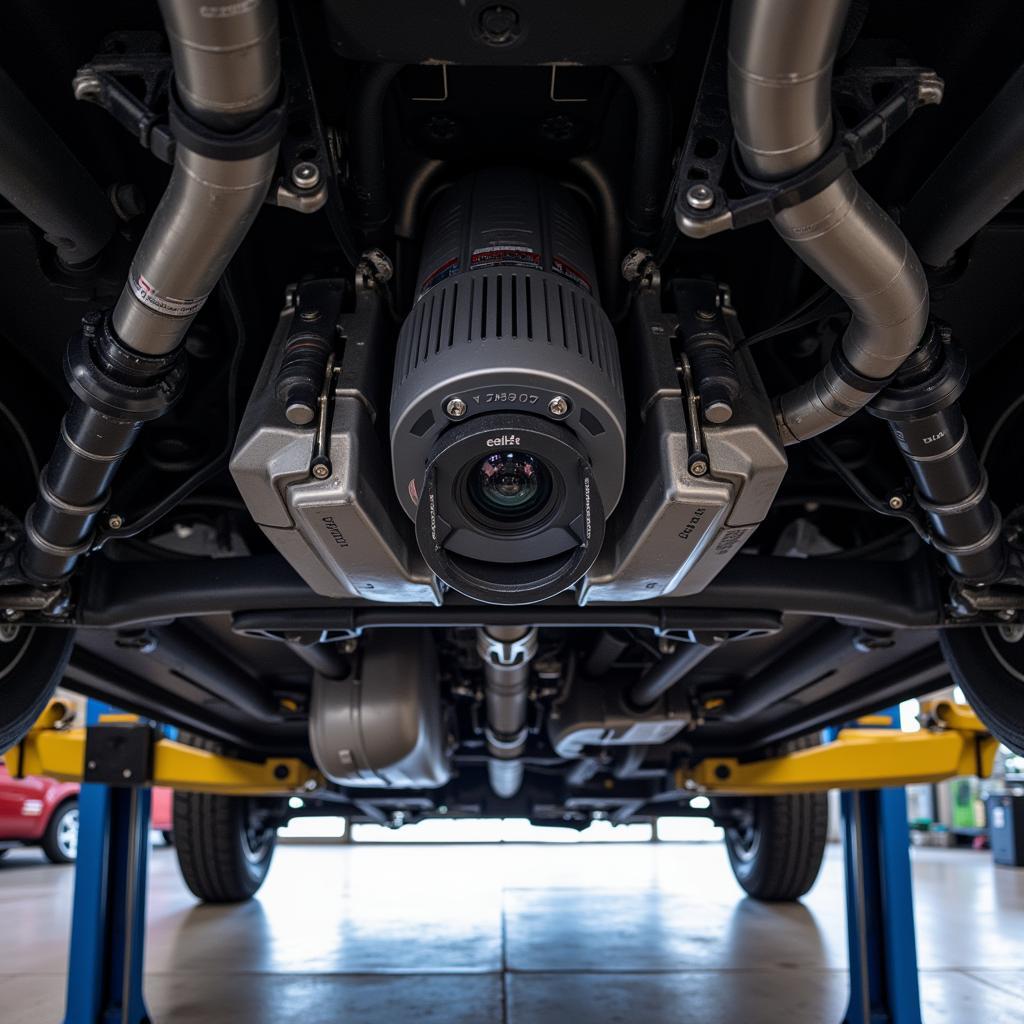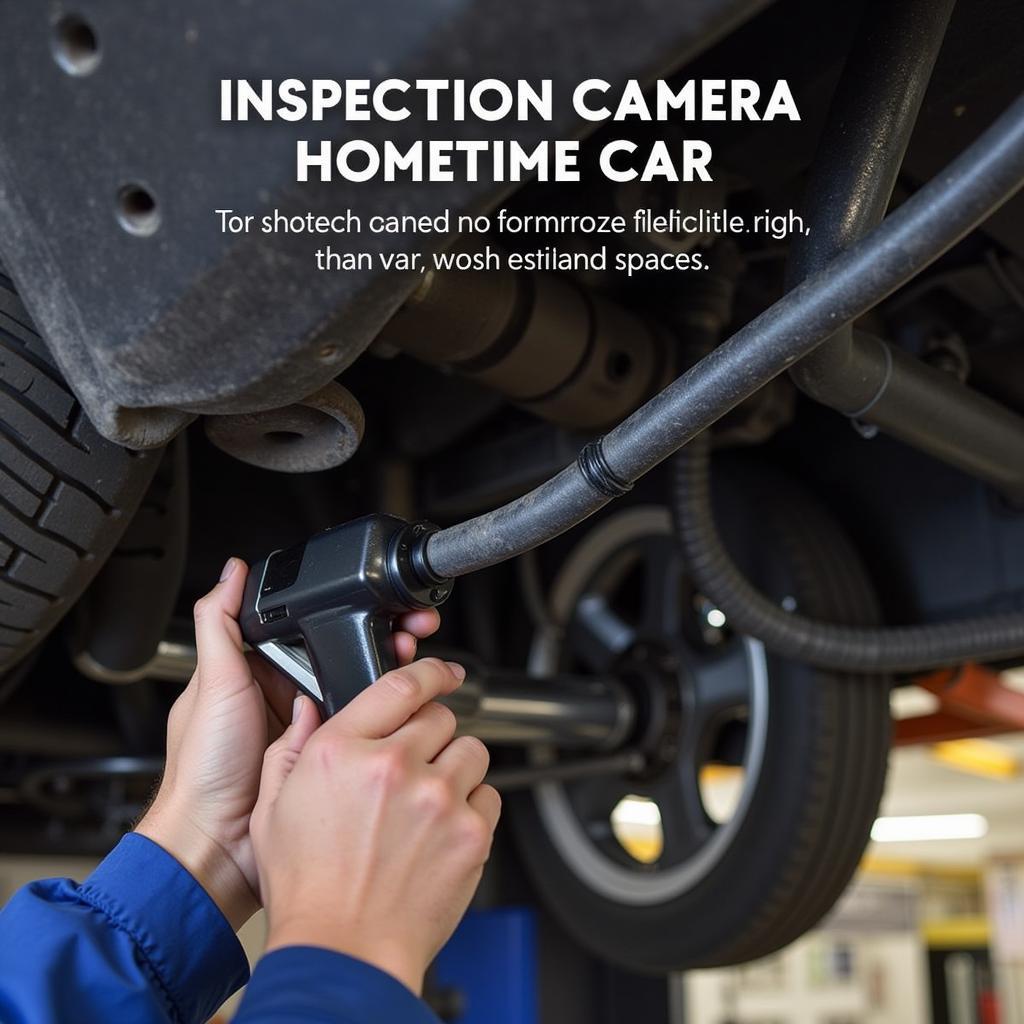When it comes to car diagnostics, a visual inspection is often just as important as the data retrieved from a scanner. Seeing the underside of your vehicle can reveal telltale signs of issues like leaks, rust, or damage. But with so many nooks and crannies, knowing the best place to put a camera under car for diagnostic purposes can be tricky.
 Optimal Camera Placement Under Car
Optimal Camera Placement Under Car
Why Camera Placement Matters in Car Diagnostics
Using a camera during your car diagnostic process isn’t just about getting a cool view of your car’s undercarriage. It’s about gaining valuable visual information that can aid in:
- Identifying leaks: A camera can help pinpoint the source of fluid leaks, whether it’s oil, coolant, transmission fluid, or brake fluid.
- Spotting rust and corrosion: Early detection of rust is crucial for preventing further damage and costly repairs.
- Assessing damage: Accidents, even minor ones, can cause hidden damage to your car’s undercarriage. A camera can help identify bent components, loose parts, or other issues.
- Verifying repairs: After a repair, using a camera can confirm that the work was done correctly and there are no new issues.
Factors to Consider When Positioning Your Camera
 Under Car Inspection Camera in Action
Under Car Inspection Camera in Action
The optimal camera placement will depend on the specific area you’re trying to inspect. However, there are a few general guidelines to keep in mind:
- Stability: Ensure the camera is securely mounted or held to avoid blurry images or videos.
- Lighting: Adequate lighting is crucial for clear visibility. Use a flashlight or work light to illuminate the area if necessary.
- Angle: Experiment with different angles to get the best view of the target area.
- Safety: Always prioritize safety. Never reach under the car while it’s running, and use jack stands to secure the vehicle properly.
Best Camera Options for Under Car Diagnostics
The type of camera you choose will depend on your budget and needs:
- Smartphone Cameras: Modern smartphones often have surprisingly good cameras. You can use a dedicated smartphone holder or a DIY solution to secure your phone for under car inspections.
- Action Cameras: Action cameras like GoPros are durable and compact, making them a good option for under car inspections. Their wide-angle lenses can capture a large area.
- Inspection Cameras: These specialized cameras are designed specifically for inspecting hard-to-reach areas. They typically feature long, flexible probes with built-in LEDs for illumination.
Common Under Car Diagnostic Scenarios and Camera Placement
Let’s delve into specific situations and the best camera placement for each:
- Suspected Oil Leak: Position the camera near the engine oil pan, focusing on the drain plug, oil filter, and surrounding areas.
- Coolant Leak: Focus the camera on the radiator, hoses, water pump, and thermostat housing.
- Transmission Fluid Leak: Aim the camera at the transmission pan, paying attention to the gasket and any visible seals.
- Brake Fluid Leak: Inspect the brake lines, calipers, and master cylinder for any signs of leaks.
- Rust Inspection: Focus on the undercarriage, particularly around the wheel wells, frame rails, and exhaust system.
Expert Insights
“When it comes to under car diagnostics, a picture is truly worth a thousand words,” says John Smith, Senior Automotive Technician at ABC Auto Repair. “A well-placed camera can help pinpoint issues that might otherwise be missed, saving time and money on unnecessary repairs.”
 Mechanic Performing Undercarriage Inspection with Camera
Mechanic Performing Undercarriage Inspection with Camera
Conclusion
Using a camera for under car diagnostics can provide invaluable visual information, helping you identify issues early and make informed repair decisions. By understanding the best places to position your camera and following safety precautions, you can take a proactive approach to car maintenance.
FAQs
1. Can I use any camera for under car diagnostics?
While any camera can be helpful, using a camera with good low-light performance and the ability to capture clear images in tight spaces is recommended.
2. What should I do if I find something concerning during my inspection?
If you spot any potential problems, it’s best to consult with a qualified mechanic for further diagnosis and repair.
3. How often should I inspect the underside of my car?
It’s a good idea to perform a visual inspection of your car’s undercarriage at least twice a year or more frequently if you live in an area with harsh weather conditions.
For more information on car diagnostics and maintenance, explore our comprehensive guides and resources on DiagFixPro. Need personalized assistance? Reach out to our expert team via WhatsApp: +1(641)206-8880 or Email: [email protected]. We’re here to support you 24/7!

Leave a Reply